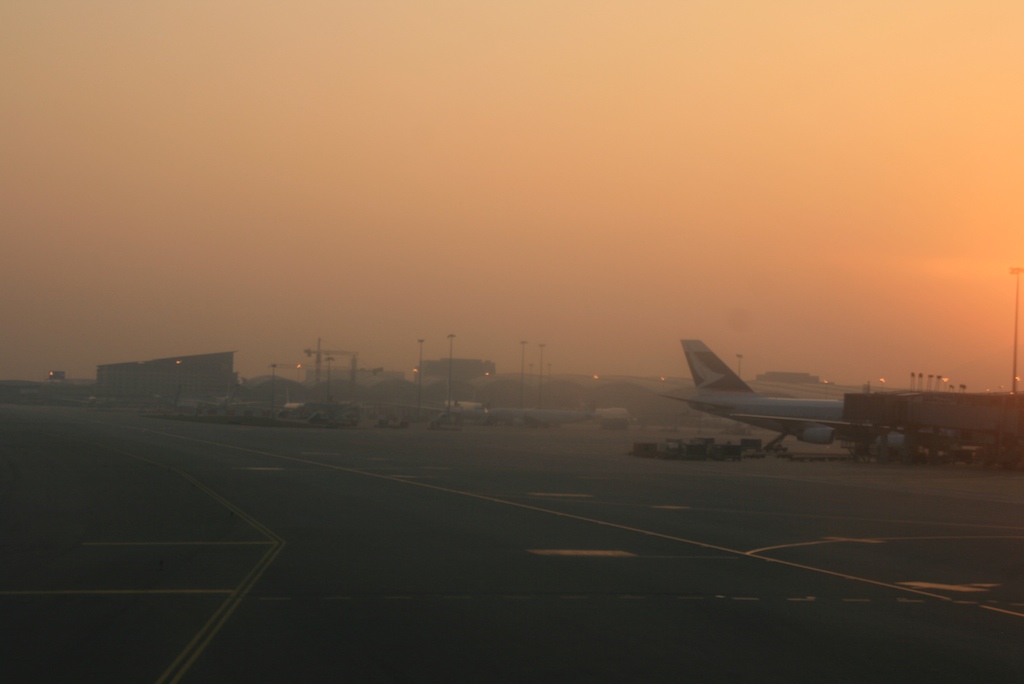
Hong Kong’s airport. Photo by “countries in colors” via flickr.
Conferences are a crucial part of science, because they offer scientists a platform to discuss their latest research results, exchange ideas for future research, and initiate scientific collaborations.
The benefit to attending conferences, along with reduced travel costs, has led to an ever increasing amount of travelling, with sometimes crazy implications. At a large international conference in Singapore earlier this year I met a European researcher who flew in for one day only. And so did a colleague of his from Japan. Another researcher once told me he travels to 27 meetings a year, which is perhaps not even that unusual. Such trips may not be limited to conferences, administrative trips can be even more frequent. Some Chinese professors fly from the provinces to Beijing for grant reviews and other administrative business about every two weeks, if not more often. I suppose it is the same elsewhere, although Japanese and European researchers have the advantage that in most cases they can use trains.
Of course, these are just personal anecdotes. So let’s consider the travelling involved for a larger international conference attended by about 5,000 researchers, as they exist for pretty much all major research fields. Let’s further assume that on average the participants live about 2,500 kilometres (1,500 miles) away from the conference. That’s 25 million kilometres flown in total. An airplane uses about 3 litres of fuel to fly a passenger for 100 kilometres. This means that 750,000 litres of fuel (200,000 US gallons) will be consumed to fly researchers to the conference alone. To move those 750,000 litres around by the way would require about 30 large tank trucks. And in terms of CO2 emissions, well, it’s an estimated 2825 tons. […]
Continue reading...
Dear reader,
after 15 months, I’ve decided to give the design of this blog a little overhaul. I’ve chosen a new theme that to me has clearer lines and easier-to-read fonts. Nothing else will change, the structural layout remains the same, and everything should still be in the same place as before.
I hope that you like the new reading, and I look forward to posting new blog posts in future, and to answer any scientific questions that you may have.
Happy reading,
Joerg
Continue reading...
Understanding the properties of something chaotic such as a bowl of spaghetti may seem a daunting task. But that’s what Garry Rumbles from the National Renewable Energy Laboratory in the USA, Natalie Stingelin from Imperial College London in the UK, and coworkers are trying to do. With success. They study polymers – long spaghetti-like molecules made of repeating atomic subunits – and have now uncovered how the microstructure of these polymers controls the behaviour of optically generated electrical charges in such a tangled molecular web, with important implications for the design of electronic devices.
The physical properties of polymers depend a lot on the length of the molecules as a whole, the atomic make-up of their structural units and the physical interactions between the individual strings. That’s why polymers come in so many forms, from hard plastics to stretchable synthetic rubbers. And what Stingelin and Rumbles now show is that also their electronic properties depend not only the chemical make-up of the polymers, but also the details of their structure and their molecular weight. This has dramatic consequences for the search of new polymers for various optical and electronic applications, says Stingelin. “Are there otherwise wonderful polymers out there that were cast aside because their creators tested the wrong molecular weight? We think it’s quite possible.”
[…]
Continue reading...



October 24, 2011
5 Comments